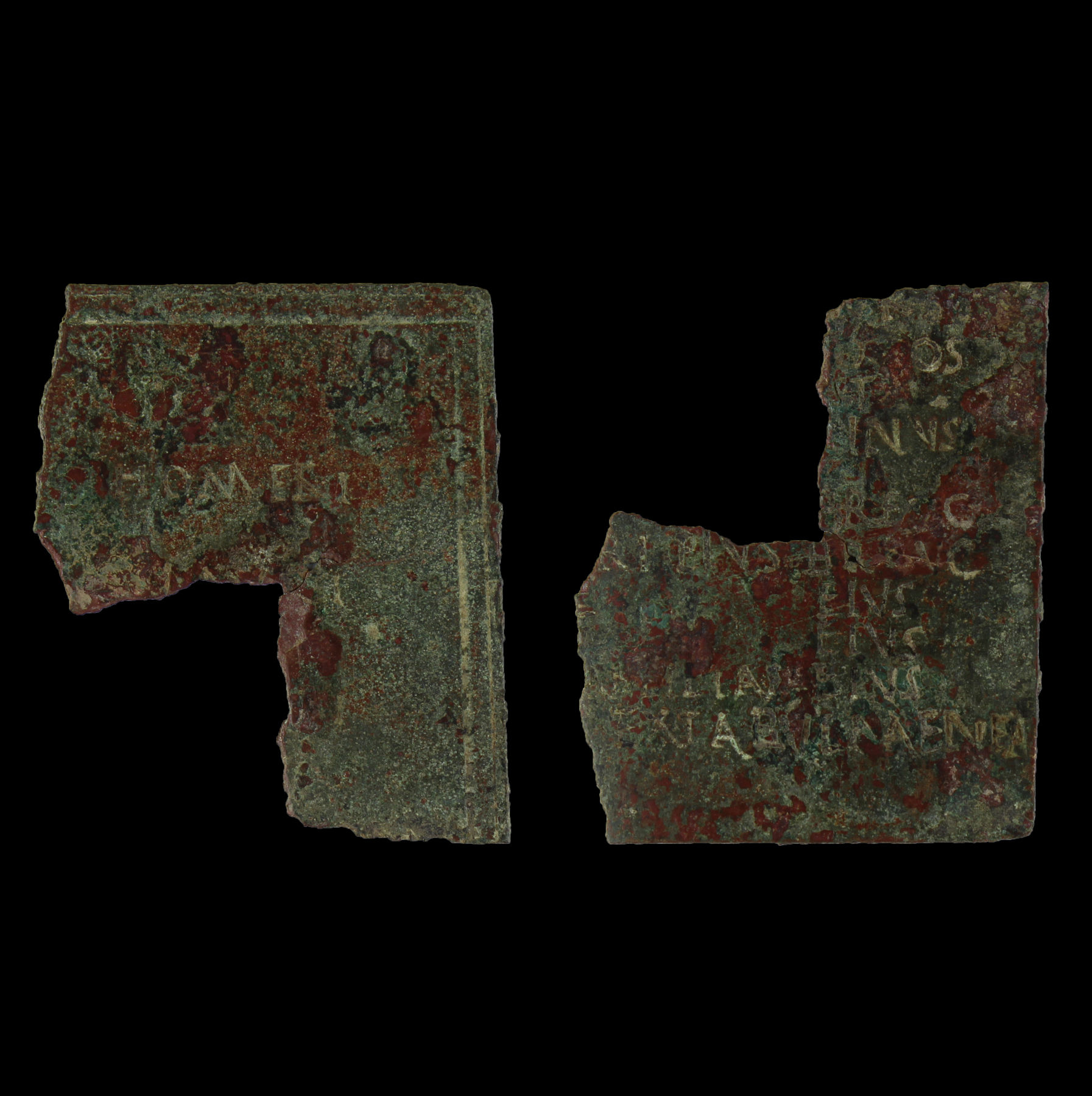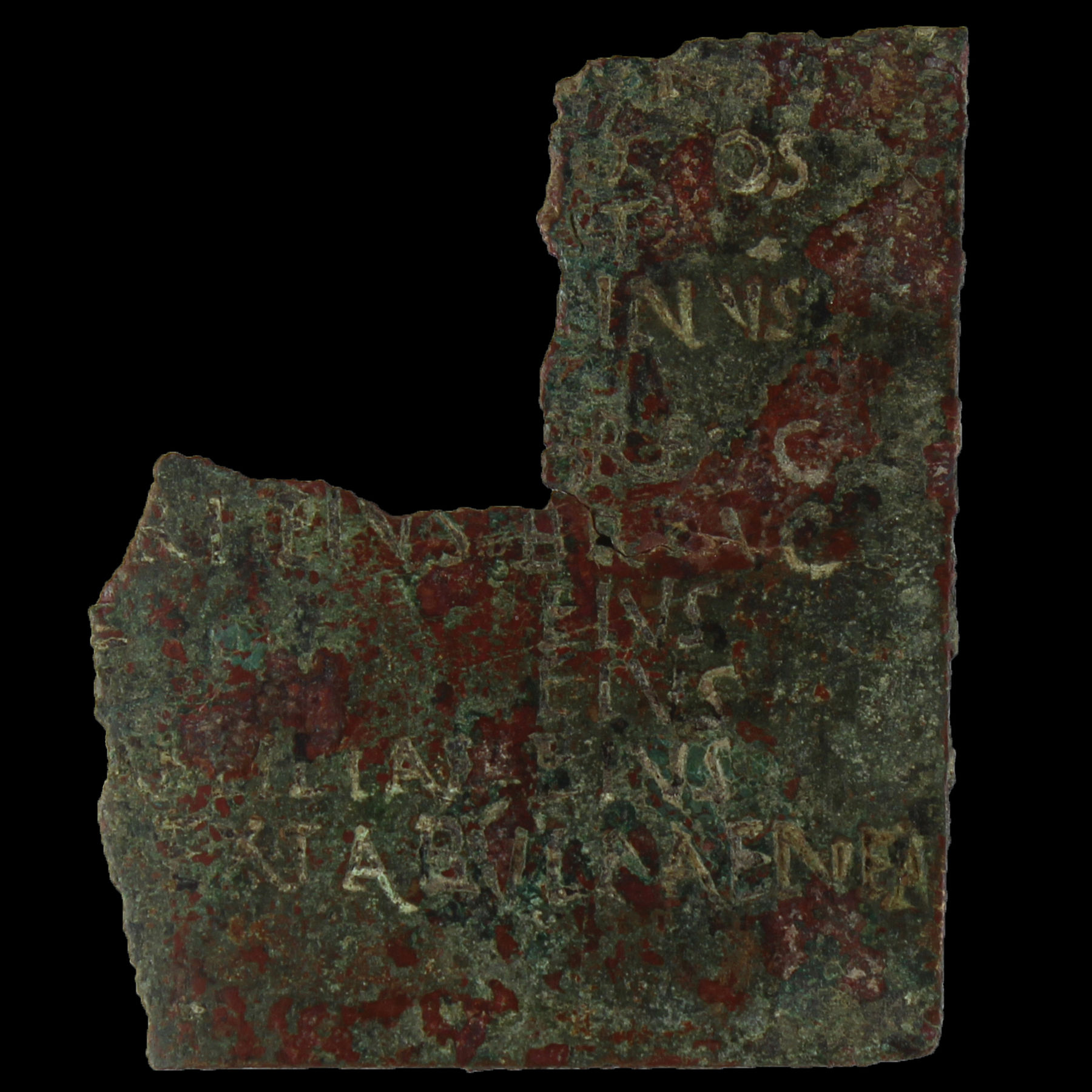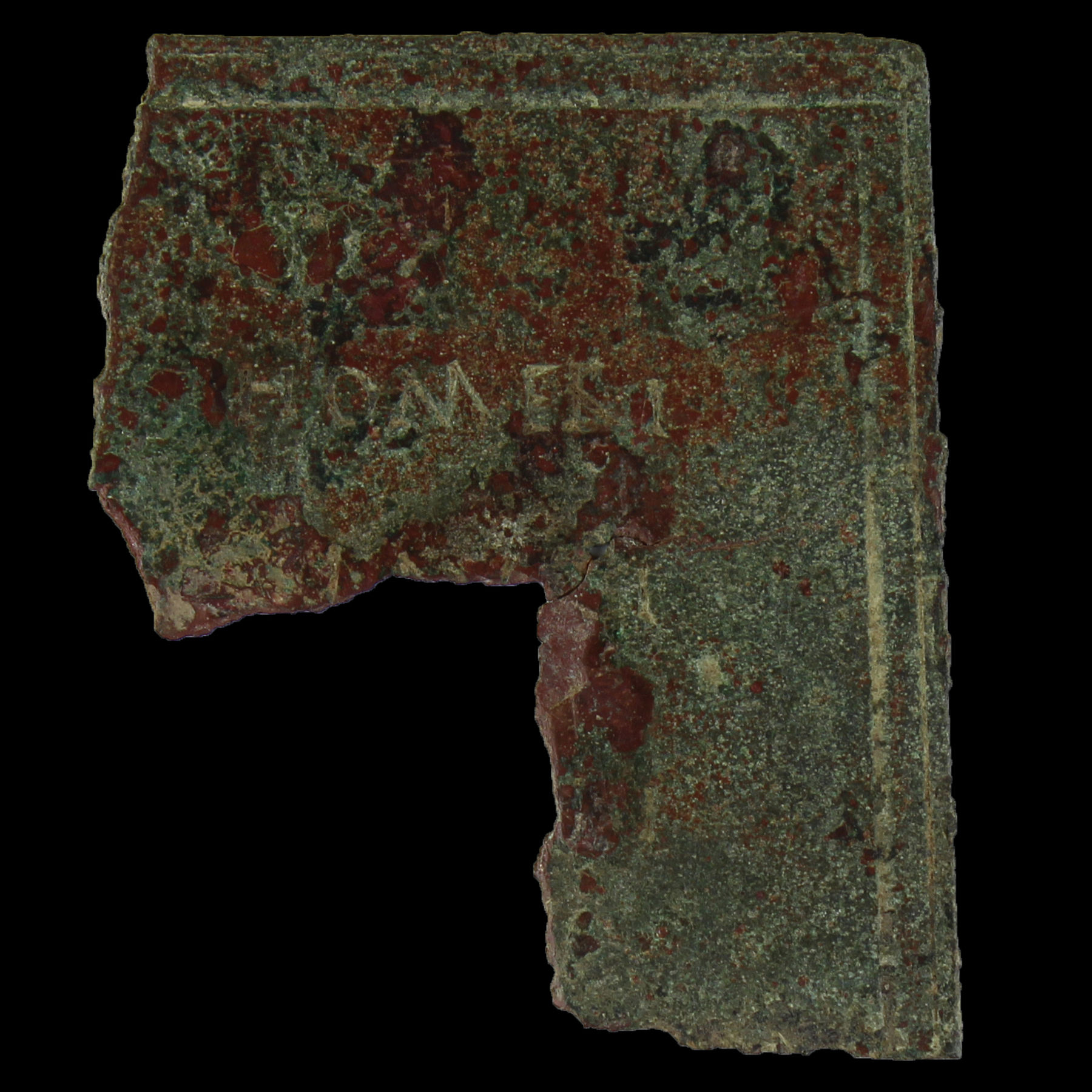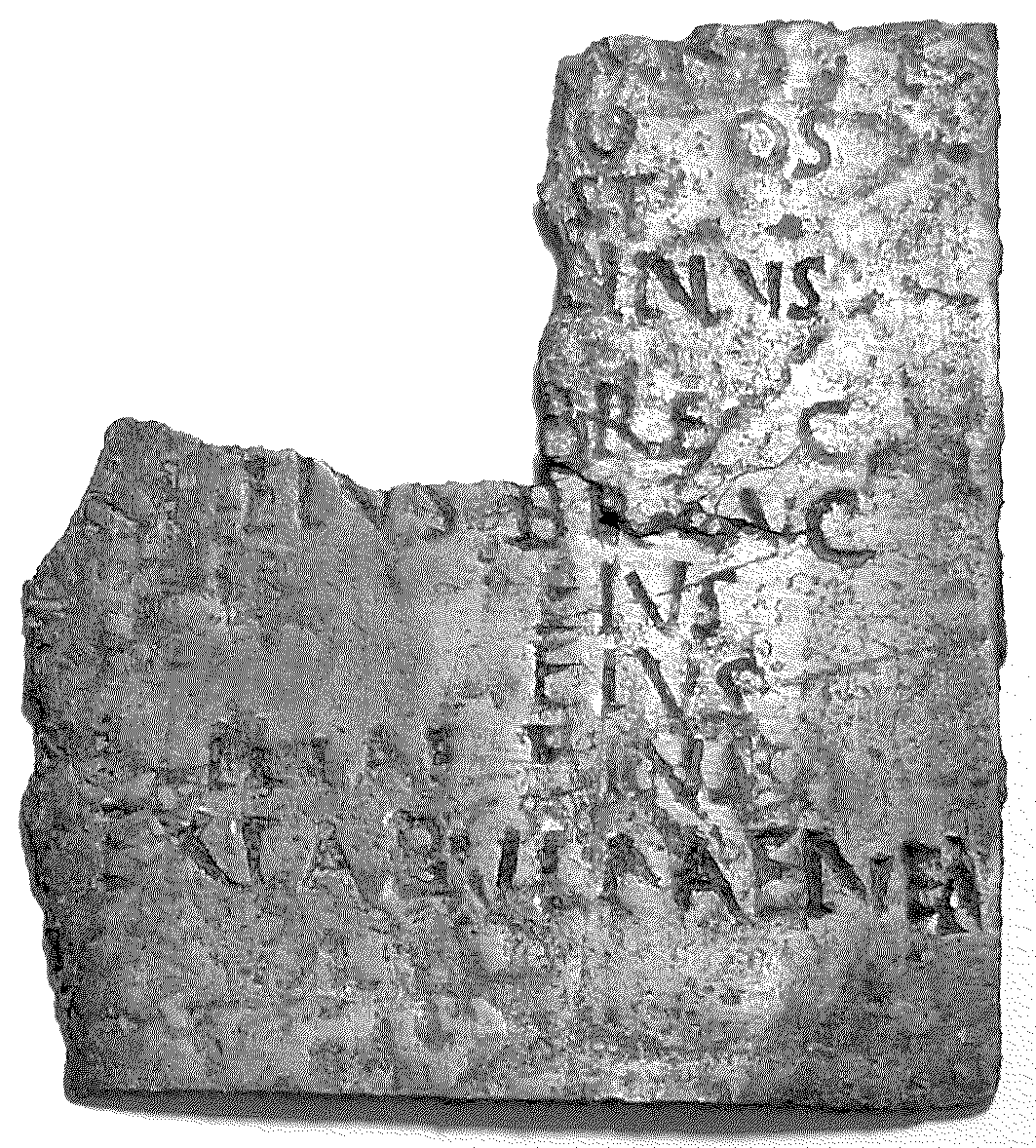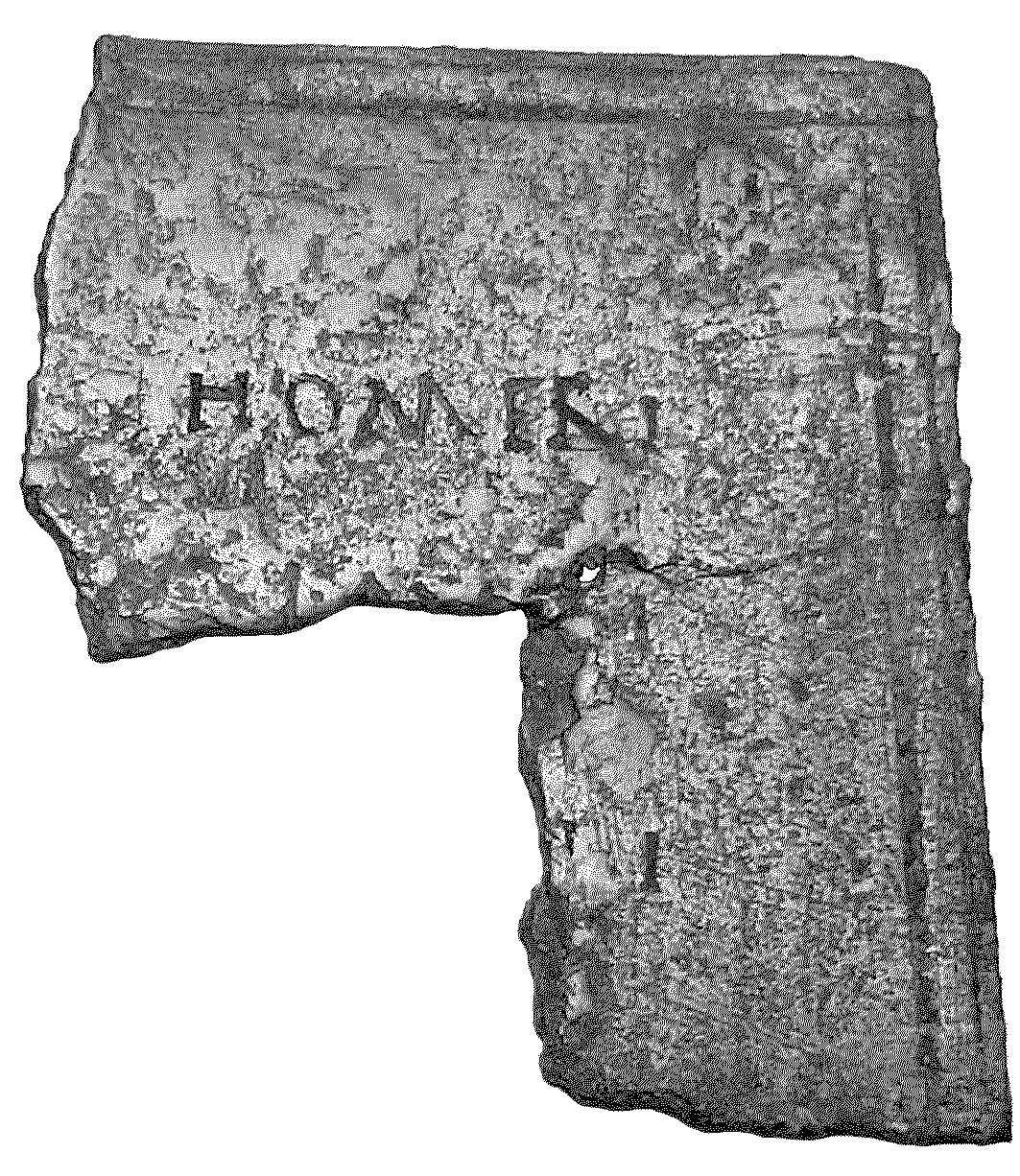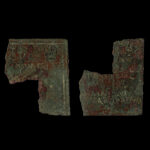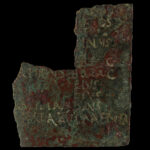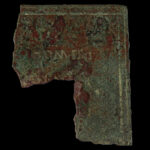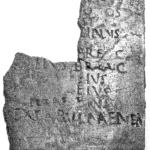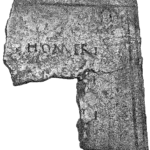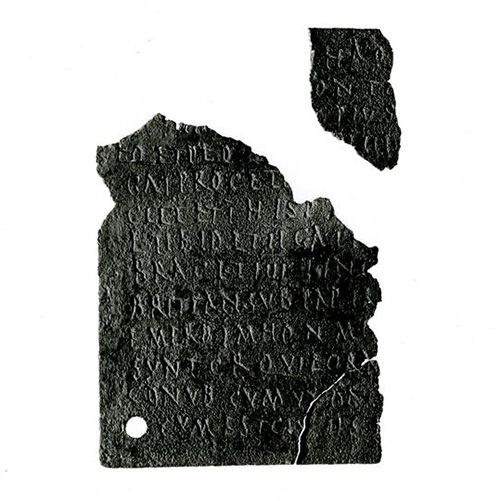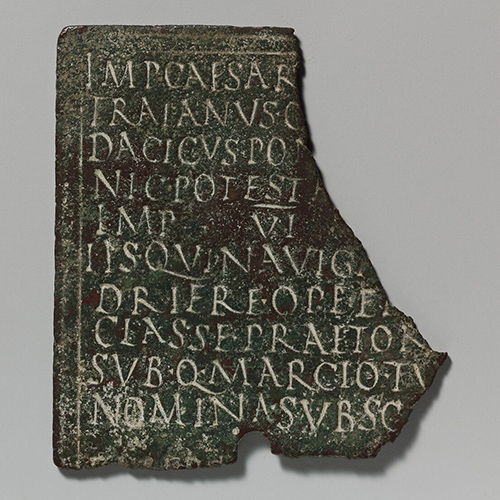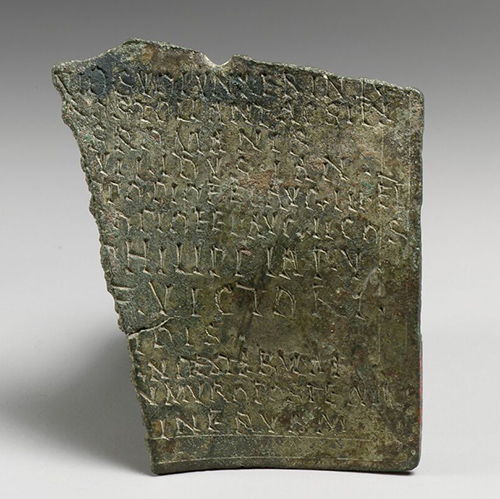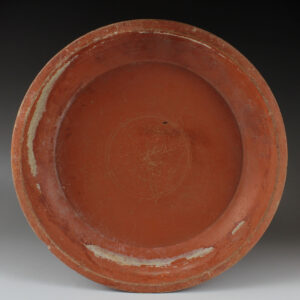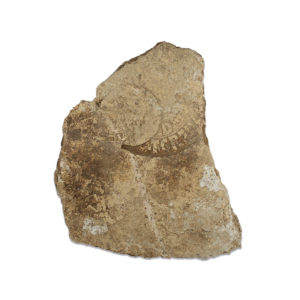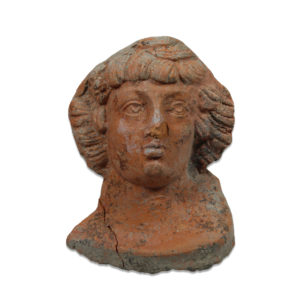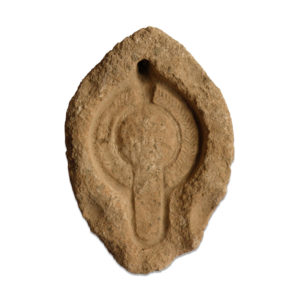Description
| ITEM | Military diploma (fragment) awarded to an auxiliary soldier from the tribe of the Breuci in Pannonia |
| MATERIAL | Bronze |
| CULTURE | Roman |
| PERIOD | 2nd Century A.D |
| DIMENSIONS | 70 mm x 57 mm, 27,5 gr |
| CONDITION | Good condition. Includes the publication. |
| PROVENANCE | Ex American Gallery, acquired in 2013. Ex European art dealer, B.M., acquired before 1980 |
| PUBLISHED | HOLDER P., A Breucus and his family on a fragmentary auxiliary diploma. Zeitschrift für Papyrologie und Epigraphik 222 (2022) 256–258 |
Awarded to an auxiliary soldier from the tribe of the Breuci in Pannonia. His wife also came from this tribe. They had three children, two sons and one daughter.
Intus:
[–]+++
[–]O COS
[–]EST
[–]LINVS
[–]
[–]BREVC(O)
[–]RI EIVS BREVC(AE)
[–]F EIVS
[–]F EIVS
[–]FILIAE EIVS
[–]EX TABVLA AENEA
Extrinsecus:
[–] HOMERI
[–]++IAVI
[–]+I
The text can be reconstructed as:
[Imp. Caesar, — ], / (auxilia) [a. d. — M]art(ias) / [ — ]o [c]os. / [alae aut cohortis — cui prae]st / [ — ]linus, / [ex — ], / Bre[u]c(o) / [et — uxo]ri eius, Breuc(ae) / [et — ] f. eius / [et — ] f. eius / [et —]ae fi liae eius. / [Descriptum et recognitum]+ ex tabula aenea / [quae fi xa est Romae]. [Q. Pompei] Homeri; / [ — ]; / [ — ]+++i; / [ — ]; / [ — ]+i; / [ — ]; [ — ]i.
A Roman military diploma was a document inscribed in bronze certifying that the holder was honourably discharged from the Roman armed forces and/or had received the grant of Roman citizenship from the emperor as reward for service. Issued to Roman Auxiliary soldiers uponcompletion of their standard 25 year term of service.
The diploma was a notarised copy of an original constitutio (decree) issued by the emperor in Rome, listing by regiment (or unit) the eligible veterans. The constitutio, recorded on a large bronze plate, was lodged in the military archive at Rome (none such has been found; presumably they were melted down in later times).
The diploma consisted of two bronze tablets hinged together. Inscriptions would be engraved on each side of both plates. The full text of a diploma was engraved on the outer side of the so-called tabula 1, while the outer side of tabula 2 displayed the names of 7 witnesses, their seals covered and protected by metal strips (such seals have rarely survived, being of organic material). The text of tabula 1 was reproduced exactly on the two inner sides. The plates would then be folded shut and sealed together, so that the external inscription would be legible without breaking the seals. The internal inscription was the official notarised copy of the text on the constitutio published in Rome. The double-inscription and seals were presumably to prevent forgery or alteration.
In a likely scenario, the holder would take the sealed diploma to the province or civitas (city/county) where he intended to live in retirement. He would then present the diploma to the keeper of archives either at the provincial governor’s headquarters (or perhaps at his local civitas offices). The archivist could break the seals and check that the data on the internal inscription matched the external one. If all was in order, he would then enter the diploma-holder’s name onto the register of resident Roman citizens.
Over 800 diplomas from the Principate have been found and over 650 published (although the majority have survived in only fragmentary form)


